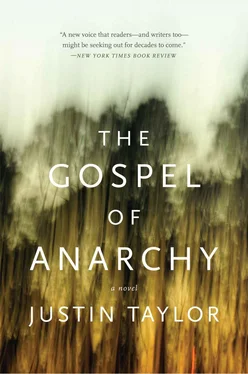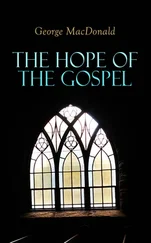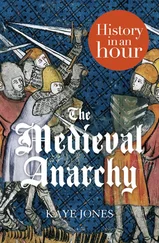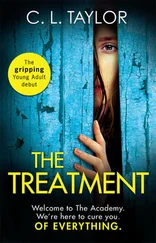In the dream, like in real life, she slips out of the party with Gene around two-thirty. They’re both hammered and nearly tumble as they attempt to navigate the Palace of Zinn’s three paint-stripped front steps, because they’re not looking where they’re going, because they’re kissing like kissing is the only thing left in the world as they make their stumbling way to the ’88 Chevy Astro van that is the Dust Biters’ tour bus.
Gene slides the side door open and hands her into the vehicle with adorable cartoonish chivalry. But in the dream it’s different: she doesn’t enter the van, lets go of his hand, tells him that she’s very sorry but there’s something she has to go do.
He slides the door shut behind them, together alone finally, all clothing hustled into the discard pile, every breath and murmur swelling to fill the close, closed space. But in the dream, what happens instead is there’s a close-up of Gene, startled, concerned for her or maybe just blue-balled — who can tell with these band guys? — then cut to a long aerial shot of her running down Fifth Avenue toward Thirteenth Street.
Hungover in the dawn light in the van, she finds Gene, still naked, fiddling with a yellow disposable camera that he might have done who knows what with while she was sleeping, prone, exposed.
“Give me the camera.”
“Oh c’mon, I just—”
“Give it to me or I’ll start screaming.”
“Okay, fuck, Jesus, I thought you were cool.”
Instead of that, this: she’s a dark streak cutting through the Gainesville night, covering football field lengths in eye-blink time, but the streets aren’t linking up where they’re supposed to, so it’s a complete surprise when she turns an unfamiliar corner and Fishgut, burning, erupts into view. She stands there, a lone figure at the far end of a deserted street, staring at a house on fire. All she can do is bear witness for what always feels like forever. In dreams the thread of time is unstrung from its loom; there’s no way to gauge or measure the interval. Eventually, inevitably, she will be released into consciousness, jolt awake shaking, chest quaking, sweaty all over, jaw clenched. But that’s later. No matter how long the dream lasts, the house is never consumed. And this is the point of the dream, maybe, what she believes or would like to be able to: that as long as she is there to watch it, the burning house can’t burn down.
On mornings after Anchor has the dream, she always does the same thing. She makes herself get out of bed and then she opens the shade, so the light dazzles her sleep-crusted eyes and floods the whole room with sun. Then she gets down on her knees in front of her twin bed, closes her eyes, clasps her hands before her, and bows her head. Lucky that Shelia’s not around. She doesn’t pray for, or to, anything in particular — doesn’t use words at all, in fact, not even in her mind — only holds the posture for as long as she wants to, whatever feels right. When she’s ready she stands back up and goes over to her desk. She sits down at the desk and opens the bottom drawer on the right side, where, in a repurposed sandwich bag with a color-seal slider (blue and yellow make green) is the folded-up paper that was in her pocket the night of the Dust Biters show. She unzips the bag and pulls the paper out, unfolds it, and reads the words. They’re her own. It’s the poem she never showed David, and it goes like this:
Song
Fertilize the worst and lose the ground.
Better to become opposition together—
Standing apart and in the way. We
Are named Origin Myth. Anything
Beautiful and furious which refuses
Is our Song
Sung in love and grass and sun.
To live even in time without limit.
No blood for the true faith.
An old monument falls down forever.
We are the young world screaming Grace .
To the following people I offer my deepest gratitude for friendship, attention, love, employment, patience, and general heroism: Danielle Benveniste, Blake Butler, Joshua Cohen, Elliott David, Rachel Fershleiser, Bill Hayward, Andrew Leland, Peter Masiak, Amy McDaniel, Amy Mees, Gene Morgan, Amanda Peters, Robert Polito, Jeremy Schmall, Michael Signorelli, Eva Talmadge, Maggie Tuttle, Mark Wagner; my parents and my sister, Melanie; and the Taylor and Starkman families.
A special thanks to Caryn and Andrew Goldner, who make sure that I get out of Brooklyn from time to time, and in whose home portions of this book were written.
This novel is set in the real city of Gainesville, Florida, where I lived from 2000 to 2004. While some of the locations, businesses, landmarks, etc., really exist or existed (though, of course, they are used fictitiously), others are entirely made up, and still others exist in a kind of composite reality, as in the case of the planet statues that Katy rides past on her bicycle. These statues, which together comprise the Gainesville Solar Walk, are the work of a regional artist named Elizabeth Indianos. They were erected in 2002, but I was determined to have them in my Gainesville, even though that meant dislocating them slightly in time. Similarly, the nondenominational Baughman Meditation Center on Lake Alice would have been under construction during the main action of this novel; it was opened to the public in 2000. Clasen’s, unfortunately, does not exist, though hope springs eternal.
The excerpts from Parker’s journal are also composites synthesized (and/or collaged) from a wide variety of sources, some publicly available, others not. Parker’s politics, in particular, owe a great deal to the works of the CrimethInc. Collective. In addition to the passage that appears as this book’s first epigraph, paraphrases, bastardizations, intentional perversions of, and unattributed direct quotes from their various books, pamphlets, and communiqués abound throughout Parker’s writings. Since all CrimethInc. works are anticopyright and published anonymously, I felt free and even encouraged to plagiarize and pirate as I saw fit. Also, though CrimethInc. has been around since the mid-1990s, their major works have all been published in the twenty-first century, beginning with Days of War, Nights of Love in 2001. A True Believer might speculate, therefore, that the Good Zine (or Parker himself, still unaccounted for) had some formative influence on their thinking, rather than the other way round.
One last thing. Parker’s image of the diamond necklace that becomes the diamond garrote is from Paul Violi’s poem “I.D., or Stolen Identities.” Ironically, it is the only thing in this book borrowed with permission, and I thank Paul for granting me the use of his words.
JUSTIN TAYLOR’s fiction and nonfiction have been widely published in journals, magazines, and Web sites, including The Believer, The Nation, The New York Tyrant , the Brooklyn Rail, The Oxford American , and National Public Radio. A coeditor of The Agriculture Reader and a contributor to HTMLGIANT, Taylor lives in Brooklyn. He is the author of Everything Here Is the Best Thing Ever , a New York Times Book Review Editors’ Choice. This is his first novel.
Visit www.AuthorTracker.com for exclusive information on your favorite HarperCollins author.












